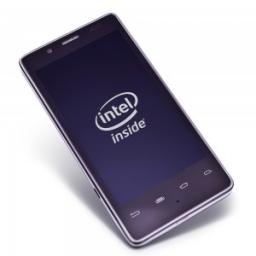
The relationship among Microsoft, Intel, and ARM remains so intricate it's keeping analysts busy full time trying to deduce what will happen next.
There's good reason to believe Intel's new Bay Trail chips provide performance and energy consumption that's not quite at ARM levels but that do permit Microsoft to hedge its bets by staying with the Intel chips its software seems to require, and ditch ARM altogether. But on the smartphone side, things aren't as clear and there, Qualcomm's ARM chips remain really the leader for mobile computing and an important part of most vendors' strategies.
When Intel lacked competitive low-power mobile system-on-a-chip, or SoC, products, it made sense for Microsoft to want to hedge its bets. After all, if Intel couldn't or wouldn't deliver, then Microsoft's tablet ambitions would crumble. However, when Intel launched its first low-power SoC for tablets -- known as Clover Trail -- it was actually a pretty decent chip. Graphics performance was terrible, but the general-purpose performance was quite a bit better than the Tegra 3 in the Surface RT. Intel's next-generation product, Bay Trail, was more competitive, offering leadership CPU performance and fairly decent graphics performance. The graphics performance of the Tegra 4 found inside of the Surface 2 was still better than Bay Trail's, but the delta wasn't so large as to make the Intel chip look laughable.
That doesn't necessarily mean happy days for Intel. In fact, ExtremeTech believes Intel forcing its way into mobile computing may destroy Intel from the inside out.Fast forward to the present day, and the market Intel is fighting to enter has changed more rapidly than Chipzilla anticipated. Intel chose to stick with dual-core with Hyper-Threading while the ARM SoCs jumped to quad-core. It chose to keep its modem manufacturing at TSMC, where it has faced repeated, unspecified delays. For all that Intel leads the world in semiconductor manufacturing, its XMM 7160 (that's the company's 4G modem actually shipping in any consumer hardware) is built on 40nm, while Qualcomm's Gobi 9i-35 platform is sitting on 20nm.
Stay tuned.
 The relationship among Microsoft, Intel, and ARM remains so intricate it's keeping analysts busy full time trying to deduce what will happen next. There's good reason to believe Intel's new Bay Trail chips provide performance and energy consumption that's not quite at ARM levels but that do permit Microsoft to hedge its bets by staying with the Intel chips its software seems to require, and ditch ARM altogether. But on the smartphone side, things aren't as clear and there, Qualcomm's ARM chips remain really the leader for mobile computing and an important part of most vendors' strategies.
The relationship among Microsoft, Intel, and ARM remains so intricate it's keeping analysts busy full time trying to deduce what will happen next. There's good reason to believe Intel's new Bay Trail chips provide performance and energy consumption that's not quite at ARM levels but that do permit Microsoft to hedge its bets by staying with the Intel chips its software seems to require, and ditch ARM altogether. But on the smartphone side, things aren't as clear and there, Qualcomm's ARM chips remain really the leader for mobile computing and an important part of most vendors' strategies.